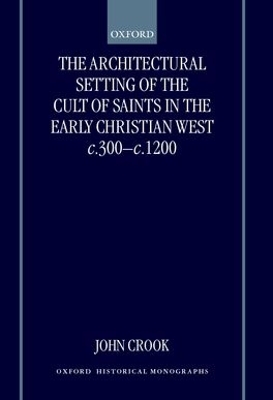Oxford Historical Monographs
1 total work
The Architectural Setting of the Cult of Saints in the Early Christian West c.300-c.1200
by John Crook
Published 1 January 2000
This book explores the way in which church architecture from the earliest centuries of Christianity has been shaped by holy bones - the physical remains or 'relics' of those whom the Church venerated as saints.
The Church's holy dead continued to exercise an influence on the living from beyond the grave, and their earthly remains provided a focus for prayer. The memoriae, house-churches and crypts of early Christian Rome; the elaborately decorated monuments containing the bodies of the bishops of Merovingian Gaul; the revival of ring crypts in the Carshingian empire; the crypts, 'tomb-shrines', and later high shrines of medieval England, all demonstrate how the presence of a holy body within
a church influenced its very architecture. This is the first complete modern study of this hitherto somewhat neglected aspect of medieval church architecture in western Europe.
The Church's holy dead continued to exercise an influence on the living from beyond the grave, and their earthly remains provided a focus for prayer. The memoriae, house-churches and crypts of early Christian Rome; the elaborately decorated monuments containing the bodies of the bishops of Merovingian Gaul; the revival of ring crypts in the Carshingian empire; the crypts, 'tomb-shrines', and later high shrines of medieval England, all demonstrate how the presence of a holy body within
a church influenced its very architecture. This is the first complete modern study of this hitherto somewhat neglected aspect of medieval church architecture in western Europe.
